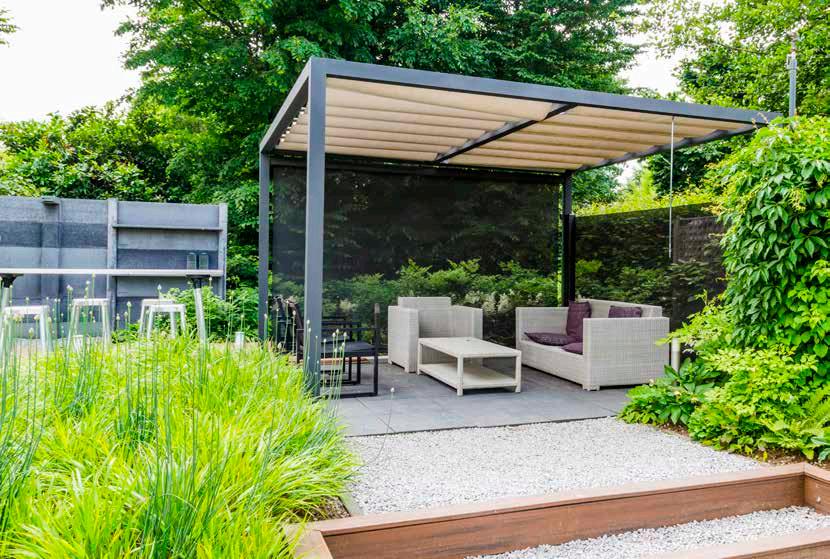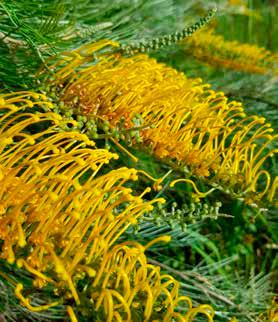
4 minute read
Time for a tree change
By Lyn Cox
We live and build our houses on plots or blocks of different sizes – from less than 300 square metres, to half an acre, to hectares. Fortunately, Mother Nature has got this covered. She gives us trees of all different shapes and sizes.
Advertisement
In Australia, National Tree Day was co-founded in 1996 by Planet Ark and Olivia Newton-John and has grown into the country’s largest community tree planting and nature protection event. Schools Tree Day will be on Friday 31st July and National Tree Day on Sunday 2nd August this year.
The New Zealand government launched the One Billion Trees Programme in December 2019, to increase tree planting across New Zealand. The goal is to double the current planting rate to reach one billion trees planted by 2028.
I vividly remember Arbor Day as a child and have since been told that the first Arbor Day happened in Spain in 1805.
It’s a day to raise awareness of trees and the important role that they play and is celebrated on different dates around the world.
Trees have a positive impact on the environment and have a role to play around our homes when planted safely and suitably.
Strategically planted trees in a neighbourhood or just around a home can absorb and muffle noise, especially in urban areas. They filter sewage and chemicals, reduce the effects of animal waste and ultimately improve the water quality of run-off.
One of the first things I remember learning in primary school science was that trees absorb carbon dioxide, locking it away in their wood, roots and leaves as they grow; and that they produce oxygen and improve the quality of the air we breathe. Trees are referred to as ‘the lungs of the earth’.
Trees provide shade plus have a cooling effect as they release water vapour into the air through their leaves. They help to limit soil erosion. They can reduce wind speeds.
Their canopy breaks the force of wind and rain on the earth while their roots bind the soil. Tree planting projects work to conserve rainwater and reduce sediment deposit during and after storms and flooding events.
Trees, which are said to be the longest living species on earth, provide shelter and food for hundreds of other species of animals and plants.
Trees make me feel better!

If a tree falls in a forest and no one is around to hear it, does it make a sound?
- symbolizes the ineffectiveness of unheard thoughts and opinions.

Australia’s first Arbor Day was held in Adelaide in 1889 and fell on 10th February this year. New Zealand celebrated its inaugural Arbor Day in Greytown in 1890. It falls on 5th June 2020.
Unfortunately, not every tree that gets planted can be sure it’s going to do the most good! Sadly, misguided people do plant the wrong trees in the wrong locations, and can create maintenance nightmares, neighbourly disputes and potentially dangerous, sometimes life-threatening situations.
Local nurseries with knowledgeable staff are good place to start when selecting trees for your yard. I take along photographs, measurements and information about aspect.
My very small houseblock on Australia’s east coast offers little room for trees of any decent size but some trees and bushes I’ve grown over the years include: Grevillea (Golden Lyre, Ivory Whip, Peaches and Cream, Billy Bonkers and more!), Callistemon viminalis, Xanthostemon, Michelia family, Nodding Breynia, Sweet Osmanthus, Japanese Maples, Magnolias, Ivory Curl, Tibouchina, Crab apple, Blueberry ash, Banksia, Frangipani, Citrus, Macadamias, New Zealand Christmas Bush (Metrosideros thomasii ), NSW Christmas Bush (ceratopetalum gummiferum), New Zealand Christmas tree (Pohutukawa), and the list goes on. It’s up to you to select the best trees for your situation.
In Australia, unpopular trees are gum trees close to homes, particularly in fire-prone locations, evergreen conifers like the tall and fast growing Leylandii cypress and the Liquidambar, which can be costly to maintain or remove.
Deciduous trees, which lose their leaves in autumn and winter, are often good choices for suburban gardens because they allow sunlight to filter into gardens during winter.
There’s been significant research around the notion that good green infrastructure, including trees, green roofs and walls, can add value to your home.
As populations grow and cities increase in density, paying attention to green infrastructure is of increased importance because it affects our well-being.
Trees could also be considered a feature when it comes to selling your home. Findings from the past decade have concluded that a tree in front of a house increased the house’s sale price by an average of $7,130AUD and that a ‘broad-leafed tree located on a street verge’ increased the price by about $16,889AUD.











